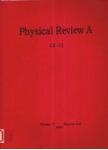版权所有:内蒙古大学图书馆 技术提供:维普资讯• 智图
内蒙古自治区呼和浩特市赛罕区大学西街235号 邮编: 010021

作者机构:Hubei Key Laboratory of Optical Information and Pattern Recognition Wuhan Institute of Technology Wuhan 430205 China Department of Physics Wenzhou University Zhejiang 325035 China Guangdong Intelligent Robotics Institute Dongguan 523808 China
出 版 物:《Physical Review A》 (物理学评论A辑:原子、分子和光学物理学)
年 卷 期:2024年第109卷第1期
页 面:013516-013516页
核心收录:
学科分类:070207[理学-光学] 07[理学] 08[工学] 0803[工学-光学工程] 0702[理学-物理学]
基 金:Guangdong Major Project of Basic and Applied Basic Research, (2019B030302003) Open Foundation project of Hubei Provincial Key Laboratory of Optical Information and Pattern Recognition, (202203) National Natural Science Foundation of China, NSFC, (12204363) National Natural Science Foundation of China, NSFC Natural Science Foundation of Hubei Province, (2022CFB753) Natural Science Foundation of Hubei Province Natural Science Foundation of Zhejiang Province, ZJNSF, (LQ23A040001) Natural Science Foundation of Zhejiang Province, ZJNSF Wuhan Institute of Technology, WIT, (CX2023275) Wuhan Institute of Technology, WIT
主 题:Nanophotonics Photonics Topological effects in photonic systems Optical microcavities
摘 要:Symmetry plays a key role in classifying topological phases, which can be enriched by the projective symmetry group in the presence of artificial gauge fields (AGFs). Here, we utilize two-dimensional (2D) photonic microring lattices to create three different topological states based on projective symmetry. By engineering link rings, we are able to flexibly manipulate the AGFs and coupling magnitude. As each plaquette carries a π flux, the two translation symmetries of a rectangle microring lattice are projectively represented. By applying different types of dimerization, we tune the spatial space to break translation symmetry and achieve a Möbius topological insulator with twisted edge bands and a graphenelike topological semimetal with flat bands, which we reflect by unique excitation spectra and field distributions. Additionally, by changing the configuration of gauge flux, the mirror and translation operators become anticommutative, leading to the fractal translation of the Brillouin zone. As a result, the band structure of topological edge modes experiences twice the period in momentum space. All results are confirmed by full-wave simulation. Our study has the potential to construct unprecedented photonic topological insulators benefiting from gauge fields.